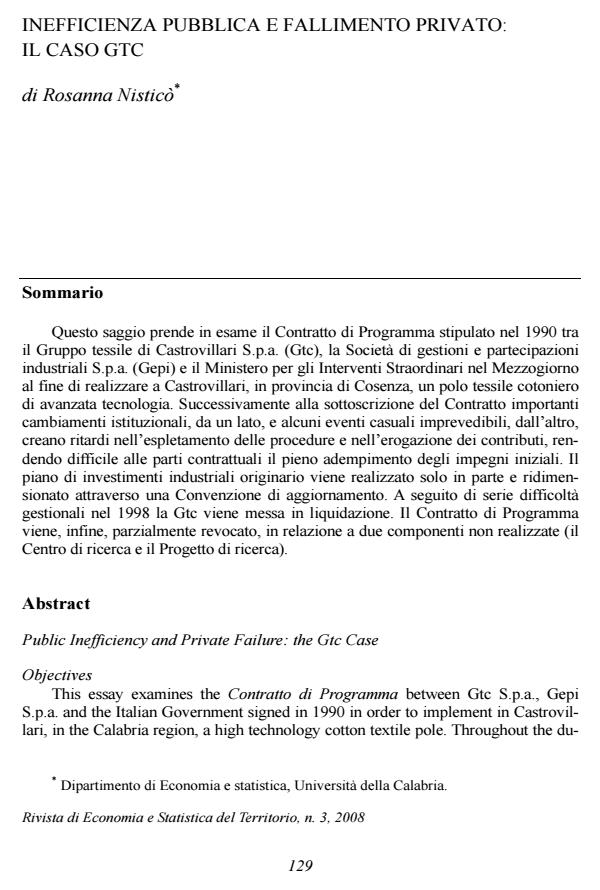Inefficenza pubblica e fallimento privato: il caso Gtc
Titolo Rivista RIVISTA DI ECONOMIA E STATISTICA DEL TERRITORIO
Autori/Curatori Rosanna Nisticò
Anno di pubblicazione 2009 Fascicolo 2008/3
Lingua Italiano Numero pagine 18 P. 129-146 Dimensione file 194 KB
DOI
Il DOI è il codice a barre della proprietà intellettuale: per saperne di più
clicca qui
Qui sotto puoi vedere in anteprima la prima pagina di questo articolo.
Se questo articolo ti interessa, lo puoi acquistare (e scaricare in formato pdf) seguendo le facili indicazioni per acquistare il download credit. Acquista Download Credits per scaricare questo Articolo in formato PDF

FrancoAngeli è membro della Publishers International Linking Association, Inc (PILA)associazione indipendente e non profit per facilitare (attraverso i servizi tecnologici implementati da CrossRef.org) l’accesso degli studiosi ai contenuti digitali nelle pubblicazioni professionali e scientifiche
Public Inefficiency and Private Failure: the Gtc Case Objectives. This essay examines the Contratto di Programma between Gtc S.p.a., Gepi S.p.a. and the Italian Government signed in 1990 in order to implement in Castrovillari, in the Calabria region, a high technology cotton textile pole. Throughout the duration of the CdP a number of relevant institutional changes gave rise to delays in the payment of public funds, making it difficult for the private party to carry on the initial project as planned. So, the investment projects were revised and reduced by means of a new agreement between parties, called Convenzione di aggiornamento. In consequence of the serious difficulties in firm’s management and finance, the Gtc company went into liquidation in 1998. The CdP was partially revoked in 2001, as regards two unfulfilled projects (the Research Centre and the Research Project). Methods and Results This case-study has been carried out both by means of interviews with several protagonists of this experience (the entrepreneur, trade-unionists, ex Gtc workers) and the examination of official documents from Government archives. Conclusions Three main suggestions on improving the efficacy and efficiency of CdP stem from this case study: i) the importance of considering the internal coherence of the measures, making each single project in the CdP able not just to coexist, but also to evolve together; ii) the necessity of taking into account the different interests of each contractual party in carrying out all the project included in the Contract; iii) the importance of aligning the time of bureaucracy with the firm’s time given the importance of market and financial constraints.
Rosanna Nisticò, Inefficenza pubblica e fallimento privato: il caso Gtc in "RIVISTA DI ECONOMIA E STATISTICA DEL TERRITORIO" 3/2008, pp 129-146, DOI: